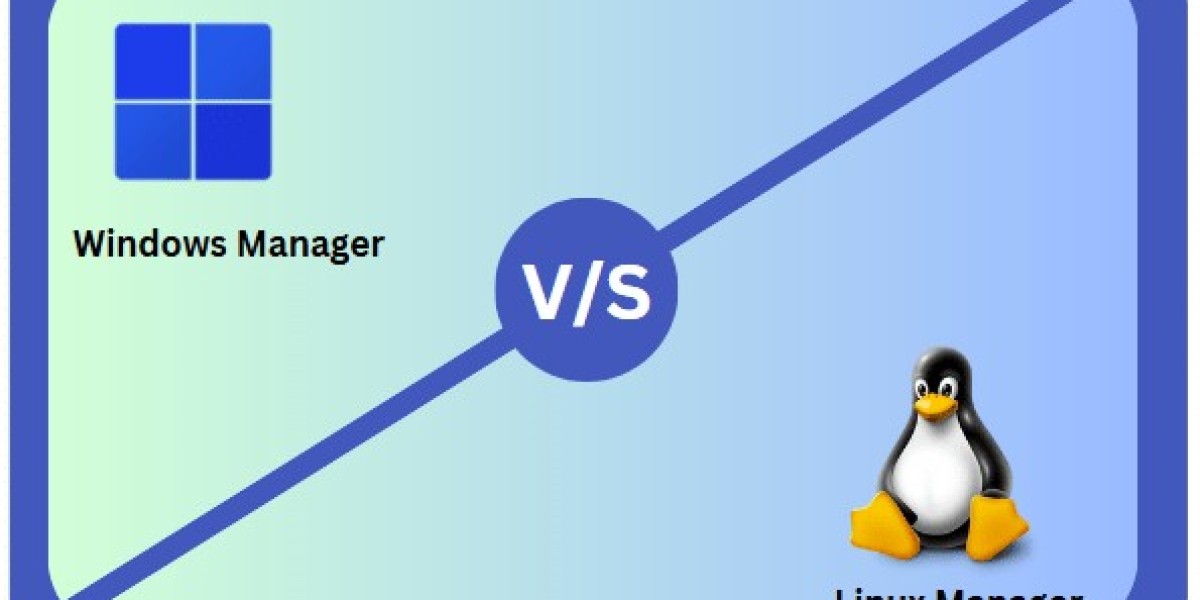When it comes to operating systems, Linux and Windows are two of the most popular choices among users worldwide. Each has its own unique features that cater to different needs and preferences. In this blog, we’ll explore the distinct features of Linux and Windows, helping you understand which operating system might be the best fit for you.
User Interface
Windows is known for its user-friendly graphical interface, which is designed to be intuitive for users of all ages. The Start menu, taskbar, and window management system are familiar to most users, making navigation straightforward. Windows has a consistent look and feel across its versions, with visual elements that are easy to recognize.
In contrast, Linux offers a variety of user interfaces, depending on the distribution (distro) you choose. Popular desktop environments include GNOME, KDE Plasma, Xfce, and LXDE. Each offers different aesthetics and functionalities, allowing users to choose a desktop that suits their preferences. This flexibility in user interfaces can make Linux appealing to advanced users who want to customize their environment.
Software Availability
Windows boasts a vast library of software applications. Most commercial software, such as Microsoft Office, Adobe Creative Suite, and a myriad of games, are developed primarily for Windows. This extensive compatibility makes Windows the go-to choice for many businesses, gamers, and graphic designers.
While Linux has traditionally lagged behind in this area, the landscape is changing. Open-source alternatives like LibreOffice (for document editing) and GIMP (for image editing) are gaining traction. Additionally, tools like Wine and PlayOnLinux allow users to run some Windows applications on Linux. However, certain specialized software, especially in gaming and professional creative work, may still lack native Linux support.
Security Features
One of the standout features of Linux is its security. Being open-source, the Linux codebase is continuously reviewed by developers worldwide, which helps identify and fix vulnerabilities more quickly. Linux also employs a strong permission and user role system, which helps to mitigate risks from malware and unauthorized access. The frequency of security updates and patches in the Linux community further enhances its reputation for security.
Windows, while historically seen as more vulnerable to malware and cyberattacks, has made significant strides in recent years. Windows Defender, integrated into the operating system, provides real-time protection against threats. Regular updates and patches are released to address vulnerabilities. Nonetheless, Windows users are often advised to supplement their security with third-party antivirus software for additional protection.
Customization and Flexibility
Linux is synonymous with customization. Users have complete access to the underlying code and can modify the operating system to fit their needs. This can range from changing the desktop environment to creating entirely new distributions tailored for specific purposes. The availability of numerous software repositories and package managers (like APT, YUM, and Pacman) further enhances customization options.
On the other hand, Windows offers limited customization options. While users can change backgrounds, themes, and some settings, the core operating system remains unchanged. Microsoft does provide some tools for customization, but the options are not as extensive as those found in Linux. This rigidity may not appeal to users who prefer to tweak their systems to their liking.
Performance and Resource Management
In terms of performance, Linux is often more efficient than Windows, particularly in server environments. Linux can run on a wide range of hardware, from powerful servers to older machines with limited resources. This efficiency makes Linux a preferred choice for server management, web hosting, and embedded systems.
Windows, while optimized for modern hardware, tends to be more resource-intensive. As new versions of Windows are released, they often require more system resources, which can lead to slower performance on older machines. However, Windows does offer features like Task Manager for monitoring system performance and managing running applications effectively.
Community and Support
The Linux community is known for its collaborative nature. Users can seek help from forums, online communities, and documentation provided by various distributions. This peer support is invaluable for both beginners and experienced users. Many Linux distributions, like Ubuntu, also offer paid support options for businesses needing professional assistance.
In contrast, Windows support primarily comes from Microsoft. Users can access help through official channels, including online documentation and customer support. While this centralized support can be beneficial, some users may miss the community-driven assistance that Linux offers.
Cost and Licensing
Linux is typically free to use, distribute, and modify. Most distributions are open-source, meaning users can access and alter the source code. This makes Linux an attractive option for budget-conscious individuals and organizations.
Windows, however, requires users to purchase a license for installation. This cost can add up, especially for organizations deploying multiple systems. While Microsoft does offer some free versions, such as Windows 10 in S mode, they come with limitations that may not suit every user’s needs.
Ideal Use Cases
Linux is ideal for:
- Developers and system administrators who require a customizable environment.
- Users looking for a secure and stable operating system for server environments.
- Budget-conscious users seeking free and open-source software solutions.
- Enthusiasts who enjoy tinkering and modifying their systems.
Windows is best suited for:
- Gamers who want access to a wide range of games and hardware support.
- Business professionals who need compatibility with commercial software.
- Casual users who prefer an intuitive interface and ease of use.
- Creatives relying on industry-standard applications like Adobe Creative Suite.
Conclusion
In conclusion, both Linux and Windows offer distinct features that cater to different user needs. Linux excels in customization, security, and cost-effectiveness, making it a favorite among developers and tech enthusiasts. Windows, on the other hand, remains a strong contender with its extensive software compatibility, user-friendly interface, and support for gaming and professional applications.
Ultimately, the choice between Linux and Windows will depend on individual preferences, use cases, and specific requirements. Whether you lean towards the flexibility of Linux or the familiarity of Windows, both operating systems continue to play a vital role in the landscape of computing.
For Complete Guide visit this [Link]







